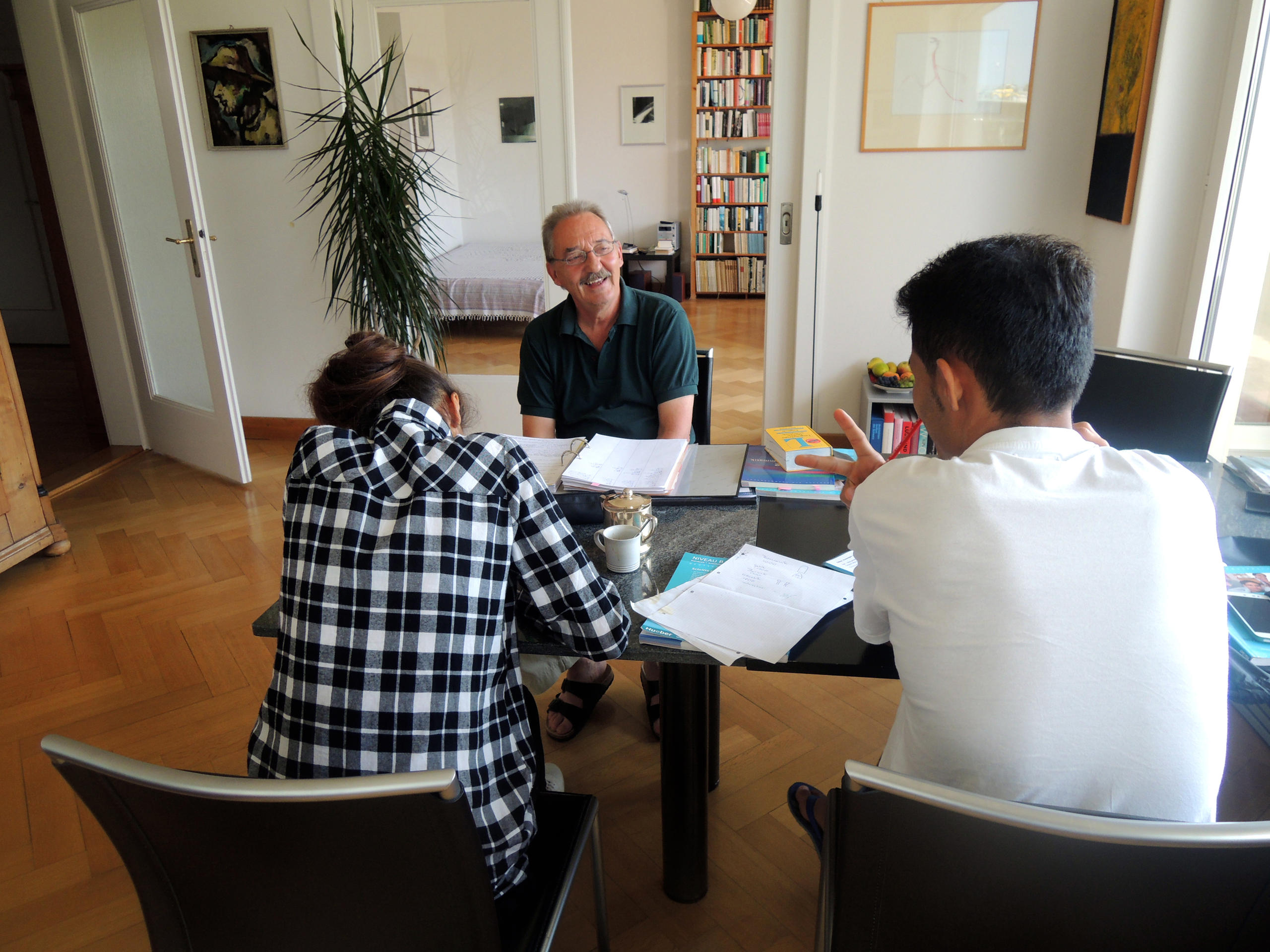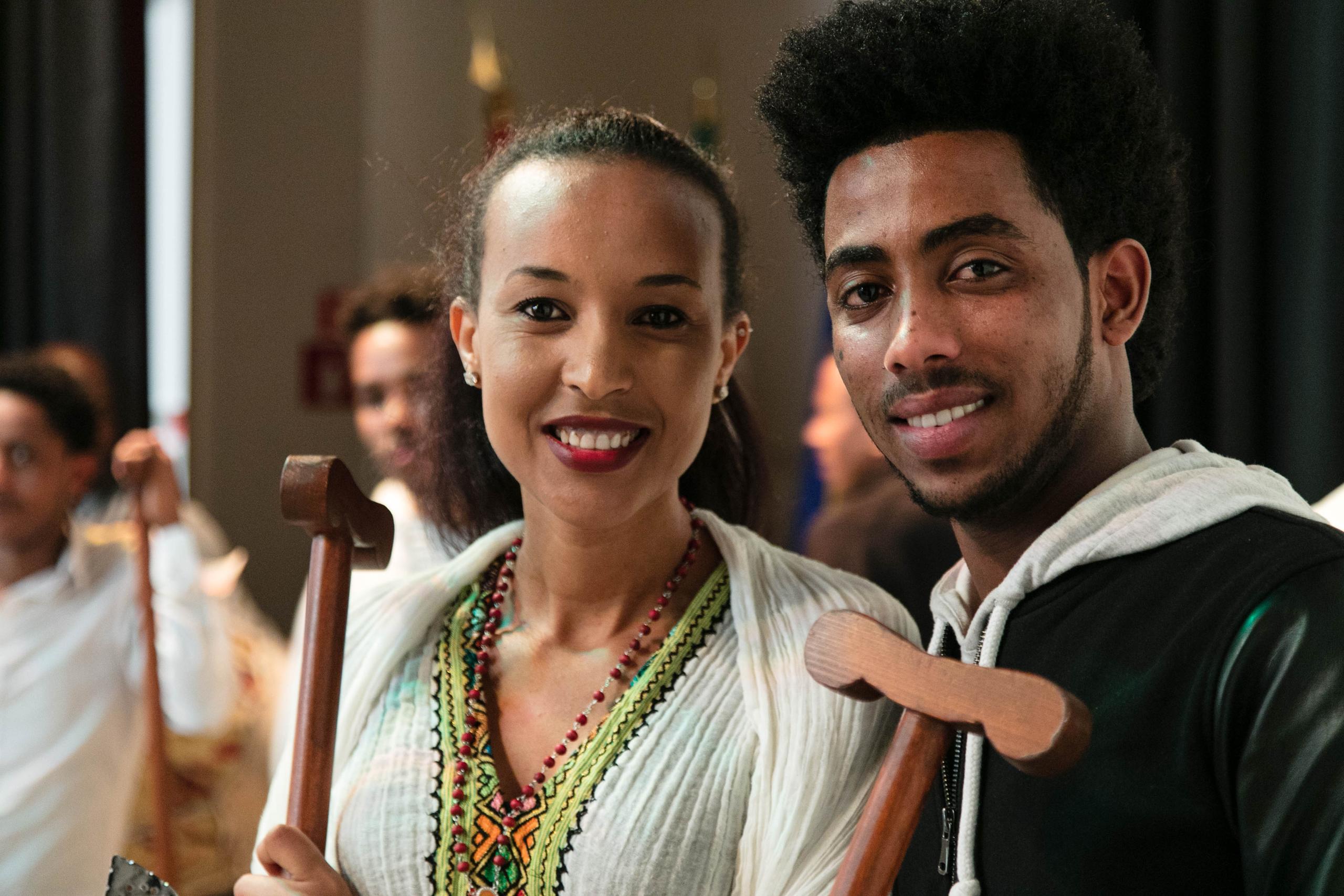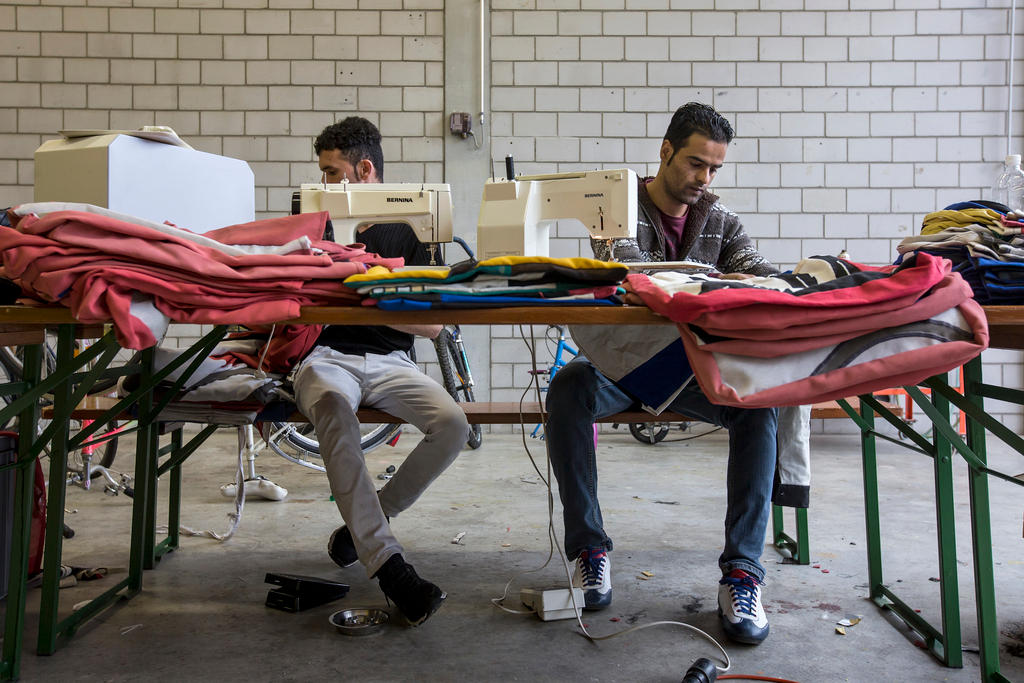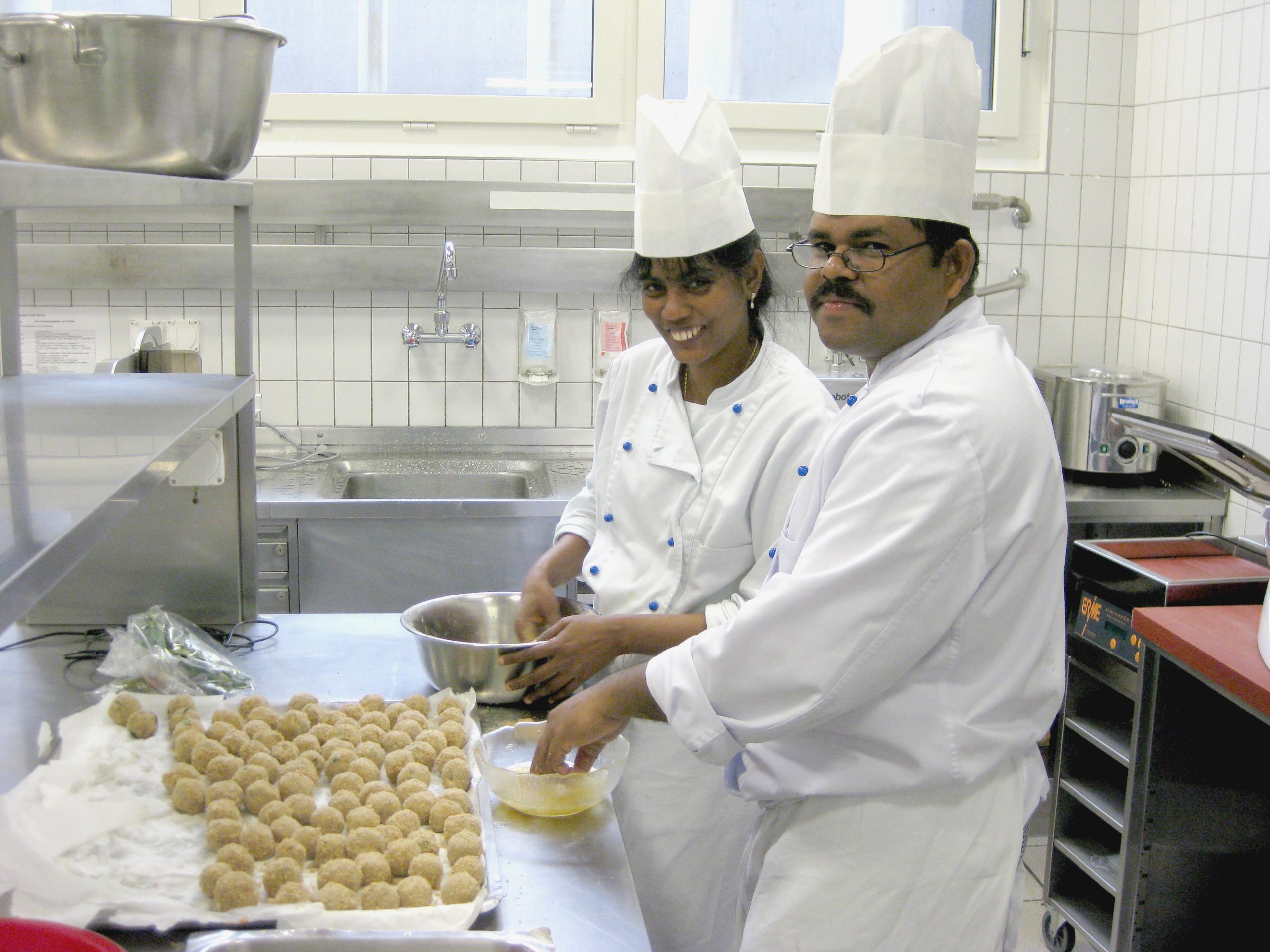The nuts and bolts of integration

Ropes, lightbulbs and a power drill are the small tools that could catapult migrants into the Swiss workforce.
Peppering his explanations with useful adverbs and prepositions, a lively man in a yellow polo shirt demonstrates how to measure and sort different types of screws. His encouraging manner seems to have a magnetic effect on a group of asylum seekers eager to absorb what they can – knowing that these little pieces of metal could be the key to a brighter future.
This is a special integration workshop at FörderschmiedeExternal link, a private language and business school in Bern. For the past two years, the school has been collaborating with aid groups like Red Cross and Caritas as well as the migration authorities in the nearby city of Thun, for example. These partners send asylum seekers into the classroom to learn German – from Monday to Friday, for two-and-a-half hours a day. The tuition is covered by canton Bern.
But occasionally, a special integration workshop like this one takes place.
“We run these workshops to see how handy people are, and whether they work well in a team,” explains Förderschmiede director Michael Lippuner. During the workshops, teachers fill out report cards. How well does the participant understand verbal and written instructions? Does he take initiative and help others? How friendly and hard-working is she?
“But we don’t automatically steer people towards cleaning or nursing – typical entry-level sectors for migrants. Instead, the idea is to help them find work where they can make the most of their experience and skills,” Lippuner says. He estimates that of the 400 asylum seekers studying at his institute, at least 5% would be ready to start working for local companies. Having previously spent 20 years at the Swiss Salvation Army (including ten as the head of finance and controlling for its social work), Lippuner would like to propose more targeted integration plans to bring people from welfare to the workforce – first in Bern, and if possible, in other cantons, too.
Eager to work
Take Albkak Belai Ammar from Syria, for example. He appears to be at the top of his class, showing his classmates how to do some of the tasks – like filling out a packing slip. He already speaks remarkably good German after just eight months here, and he’s also trying to learn the Bernese dialect.
“I love this kind of work. It’s what I used to do back home, and I want to do it here, too. But first I should finish the next German levels, B-1 and B-2, and I need to do an apprenticeship,” Ammar explains eagerly. His life here started when aid workers at a refugee camp in Lebanon arranged for his family to come to Switzerland to get medical care for his brother, who has a heart condition.
Most of the school’s German and integration students are from Eritrea, Dina Elsae included. She came to Switzerland two years ago – via a difficult journey through Sudan, Libya and Italy. Today she is serene and cheerful, and she enjoyed the workshop.
“It was very good. A little bit difficult, but I tried everything and it went well,” she says, pleased especially that she and her classmates were able to hook up a battery to power a lightbulb.
“When my German is better I’ll look for a job, possibly in a hotel or a shop,” she says, adding that back in Eritrea, she worked at a hotel. Elsae isn’t the only participant with rather limited experience handling power tools; others include an accountant – with a bachelor’s degree – and a shoe seller. For the car mechanic, however, such work would be more familiar.

‘Either the bulb lights up or it doesn’t’
By the end of the workshop, the instructor is satisfied, too.
“They’re very interested and motivated. And at the end you have a result. Either the bulb lights up or it doesn’t. They see that straight away,” says Jürg Lippuner, brother of the school’s director. A former primary school teacher and principal, he emphasises the value of active learning.
“Doing something with your hands and learning like this is completely different from sitting in a classroom and cramming grammar. This loosens things up a bit.”
The school’s integration programme provides a first glimpse of professional life in Switzerland. Launched about a year ago, the first level includes workshops like this plus visits to companies and short-term work assignments. In the next project phase, which launched in April, the goal is to evaluate the participants more closely and match them to professional fields.
“They’re not just refugees, but people who have potential for our national economy,” says school director Lippuner, pointing out that both sides would benefit from faster and more targeted integration efforts.
Even he is surprised at the results so far: Some of the participants have already landed an apprenticeship.
National Integration Conference
Education and work are key to the integration of migrants, finds Swiss Justice Minister Simonetta Sommaruga. Speaking at the third annual National Integration Conference in Bern on Monday, she addressed 250 politicians, economists and social workers.
Delegates discussed investing more money in educating newly arrived children, youths and young adults, with a particular focus on job market integration. Increasing social contact through volunteer-led community projects was another suggestion.
The cantons say they need more federal funding for this work. Currently, the federal government gives cantons a one-time sum of CHF6,000 ($6,157) per asylum seeker. The cantons have asked the government to triple that.
Sommaruga sees potential for improved integration as well as its advantages: “If you have a job, you don’t need welfare.” By the end of this year, the justice and finance ministries, along with three cantonal government conferences, want to define a more concrete plan and budget while determining how to make better use of the professional potential of refugees.
You can contact the author on Twitter @SMisickaExternal link.

In compliance with the JTI standards
More: SWI swissinfo.ch certified by the Journalism Trust Initiative

















You can find an overview of ongoing debates with our journalists here . Please join us!
If you want to start a conversation about a topic raised in this article or want to report factual errors, email us at english@swissinfo.ch.